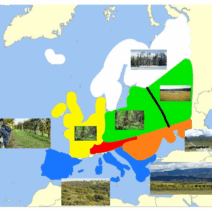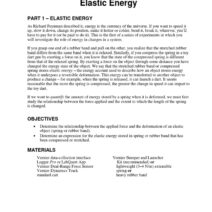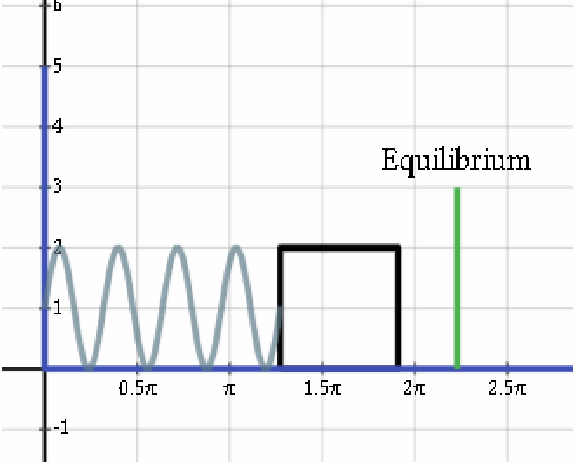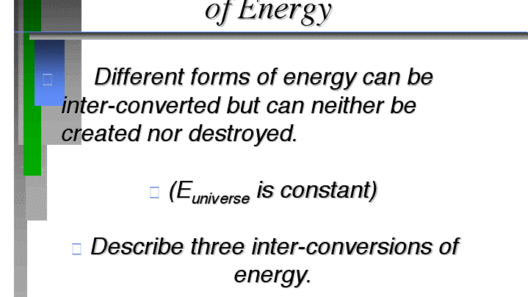The intricate dance of energy conservation within a mass spring system is a testament to the principles of physics, where potential and kinetic energies symbiotically intertwine, creating a mesmerizing rhythm of oscillations. A mass spring system is a classical mechanics model that exhibits simple harmonic motion, characterized by a mass attached to a spring, a perfect embodiment of Hooke’s Law. Within these systems, energy is neither created nor annihilated but rather transformed and transmitted, echoing the eternal conservation of energy principle.
The foundation lies in Hooke’s Law, which postulates that the force exerted by a spring is directly proportional to the displacement from its equilibrium position. Mathematically expressed as F = -kx, where F is the restoring force, k is the spring constant, and x is the displacement, it outlines an essential relationship. When a mass is displaced from its equilibrium, the spring exerts a force that strives to return the mass to its equilibrium position, establishing the cyclical motion characteristic of oscillations.
Initially, when the mass is stretched or compressed, the potential energy stored in the spring is at its maximum. This potent energy can be quantified using the formula PE = 1/2 kx², illustrating that potential energy escalates with the square of the displacement. As the system begins its oscillatory motion, potential energy transfigures into kinetic energy, encapsulated by the equation KE = 1/2 mv², where m represents mass and v is velocity. At the point of equilibrium, when the mass’s velocity reaches its apex, potential energy is at a minimum, and kinetic energy is at its maximum, a pivotal moment in the energy transformation cycle.
This rhythmic interchange between potential and kinetic energies is a compelling feature of mass spring systems. As energy oscillates between these forms, it is crucial to understand the role of damping in system dynamics. Damping refers to the gradual loss of energy due to non-conservative forces, such as friction or air resistance. While in an ideal mass spring system without damping, energy oscillates indefinitely, real-world applications exhibit damping effects, gradually diminishing the oscillation amplitude until the system comes to rest. This phenomenon serves as a reminder that even within seemingly perfect systems, external forces inevitably intervene.
Furthermore, exploring the resonant frequency of a mass spring system provides deeper insights into its oscillatory behaviors. The resonant frequency, denoted as ω₀, is a critical point where the system exhibits maximum amplitude of oscillation. It can be defined as ω₀ = √(k/m), a pivotal equation that showcases how varying the mass or the spring constant alters the oscillation frequency. Understanding this frequency facilitates control over system behavior, allowing engineers and scientists to design systems that harness oscillations for practical applications, notably in seismology and engineering structures.
The conservation of energy in mass spring systems is not merely confined to mechanical systems; it extends into the realms of engineering, technology, and even our ecological surroundings. For instance, technologies harnessing mechanical oscillations exploit the principles of energy conservation to improve efficiency in various applications. In renewable energy, oscillatory phenomena seen in wave energy converters, which mimic spring behaviors, are essential in transforming energy from mechanical systems into usable electricity.
An equally fascinating aspect arises when considering the implications of mass spring systems on societal energy use and climate change. Oscillatory movements can be exploited to create more sustainable energy use. For example, in urban environments, creating structures that utilize mass spring systems to absorb and dissipate vibrational energy from pedestrians or vehicles can reduce energy loss, ultimately minimizing environmental footprints. This intersection of physics and environmental stewardship beckons a reimagined outlook on energy conservation.
Moreover, by delving deeper into the potential applications of mass spring systems, we uncover their capacity to influence our approach to climate change mitigation. Implementing technologies that efficiently harness oscillatory motion aligns with the global imperative to reduce reliance on fossil fuels and transition towards renewable energy sources. The melodies of these systems resonate far beyond the realm of theoretical physics; they hold the promise of a sustainable future.
As we unravel the complexities of energy conservation, one must recognize that every oscillation carries the weight of potential. Instructors in the field of physics often emphasize the significance of engaging with these concepts not merely as abstract notions, but as pivotal tools for reshaping our interactions with the world around us. By nurturing curiosity and understanding the rhythms of oscillation, we can cultivate a profound appreciation for the interconnectedness of energy systems, ultimately inspiring a cultural shift toward sustainability.
In conclusion, the study of energy conservation in mass spring systems reveals a captivating tapestry woven from the threads of physics, engineering, and environmental science. The interplay of potential and kinetic energies creates a dynamic narrative steeped in principles that govern not only our understanding of the physical world but also our moral obligations to it. As energy oscillates between different forms, it serves as a reminder of the need for innovative thinking in a climate-conscious era. Every oscillation beckons us to explore deeper, compelling us to engage with the world through the lens of sustainability, seeking harmony between our technological advancements and ecological preservation.







